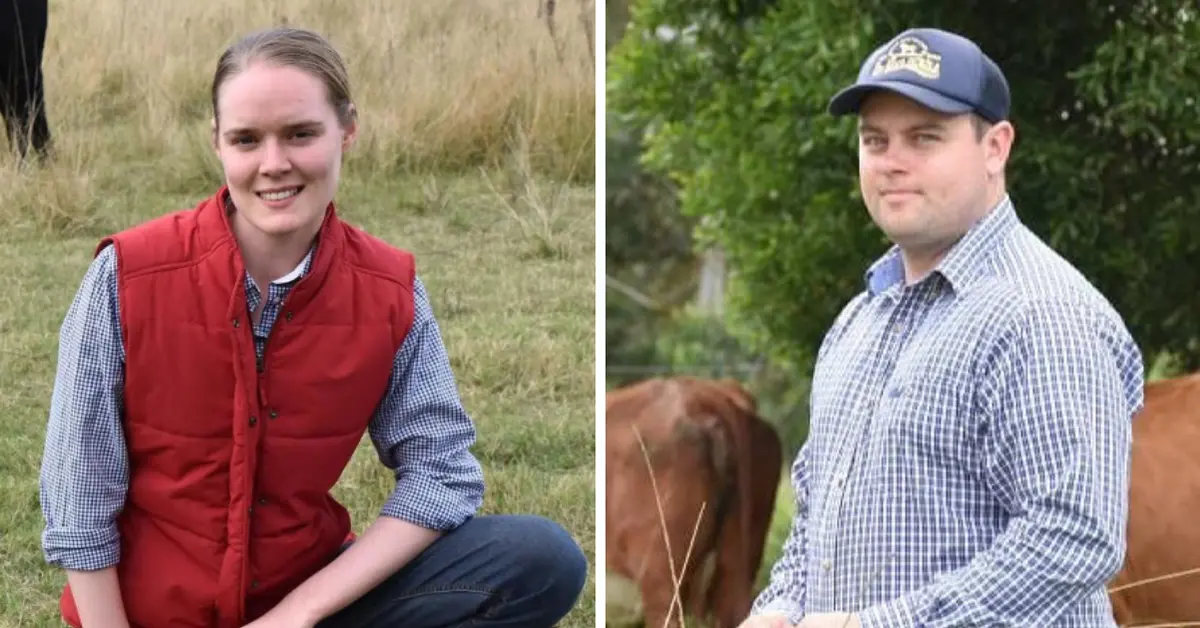Australia’s young farmers are fighting to keep the agricultural industry going, despite being battered by critical issues.
Sophie Nichols, 28, and Josh Gilbert, 34, are cattle farmers more than 130km apart in NSW, but are facing the same problem.
The pair have felt devastating impacts of the worst drought on record, severe bushfires, including the Black Summer, and flooding.

Nichols, who is a fourth-generation farmer in Singleton, was forced to sell half of her herd, which had been in the family since the 1970s.
“That was extremely stressful for me, having to be the person that decided to lose all that,” she said.
“That was a bit of a trigger point.”
Gilbert said he copped more than two metres of rainfall in just five months, which has drenched his farm in Gloucester.
“Is this the new normal of what the weather system will look like and continue to look like due to emissions?” he said.
Nichols and Gilbert are both fearful about the future of farming due to the abnormal weather changes.
They are also concerned about the lack of young people entering the industry to replace the ageing demographic of farmers who will soon retire.
“It’s the pressure, like a lot of young farmers, that would my generation be the last that’s going to be able to farm land?” Nichols said.
“How many more bad years can we have?” Gilbert said.

Australia’s first National Climate Risk Assessment report deemed the climate risk to primary industries and the food system as moderate to high, with that risk to escalate to high to very high by 2050.
It noted that climate hazards like bushfires and flooding could cause a reduction in workforce, food insecurity and challenges for agricultural communities.
The report found the cumulative wealth loss in Australia from reduced agricultural and labour productivity due to climate change could exceed $19 billion by 2030, $211 billion by 2050, and $4.2 trillion by 2100.
Nichols has shifted operations to regenerative agriculture and installed solar batteries, which slashed her power bills in half, but it was not enough.
She finds herself spending about 15 per cent of profits each year on measures to keep up with severe weather events like east coast lows that caused flooding this winter season.
“The biggest cost to me at the moment would be trying to get the farm up and going, in terms of electric vehicles, batteries and stuff to make it more resilient,” she said.
“The cost of becoming resilient on the farm is pretty costly.”
Gilbert has also made changes to become resilient, but found it hard to keep up with the rapidly changing climate.

”The significant shifts in that mean that the changes are having to be made very quickly,” he said.
“For me, it’s about looking at what climate change systems are we going to face, and what can we keep doing, and at what moment will we run out of options, and we’re going to be stranded.”
Nichols and Gilbert say the compounding issues may be fatal to Australia’s agricultural industry, which may lead to a higher grocery bill at the supermarkets for the average consumer.
“If we end up becoming reliant on imports. I think it’s devastating,” Nichols said.
“The government would have to subsidise a lot of the food production. If you’re having to subsidise farming practices because of climate change, then it’s never going to end. It’s such a cost, and I think you just go into more and more debt.”
“Our work really is to try and make farming sexy for the next generation of young people to get involved, so that we actually have a workforce and a group of people who are passionate about doing this, no matter what the external climatic events are like,” Gilbert said.


